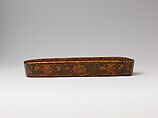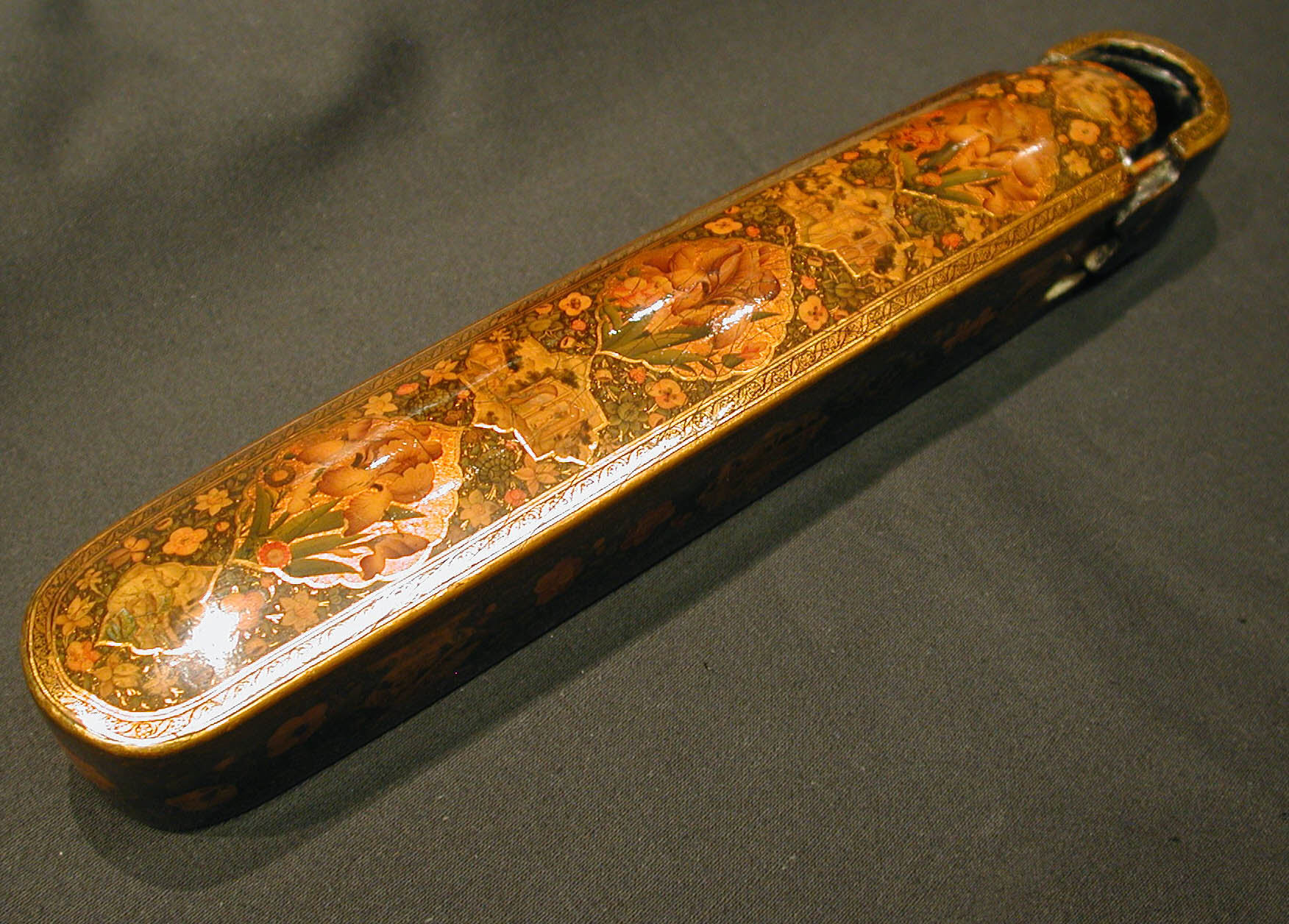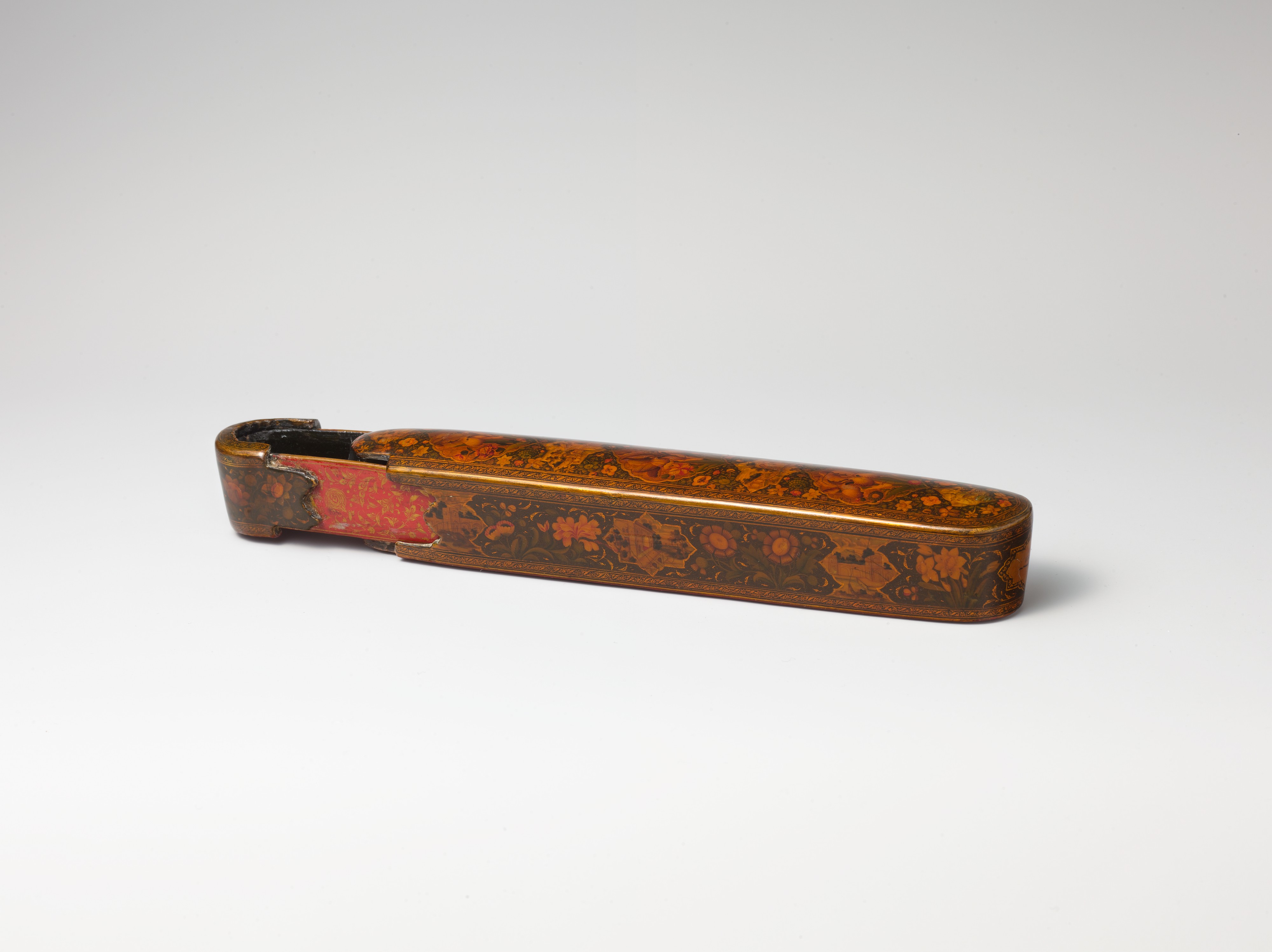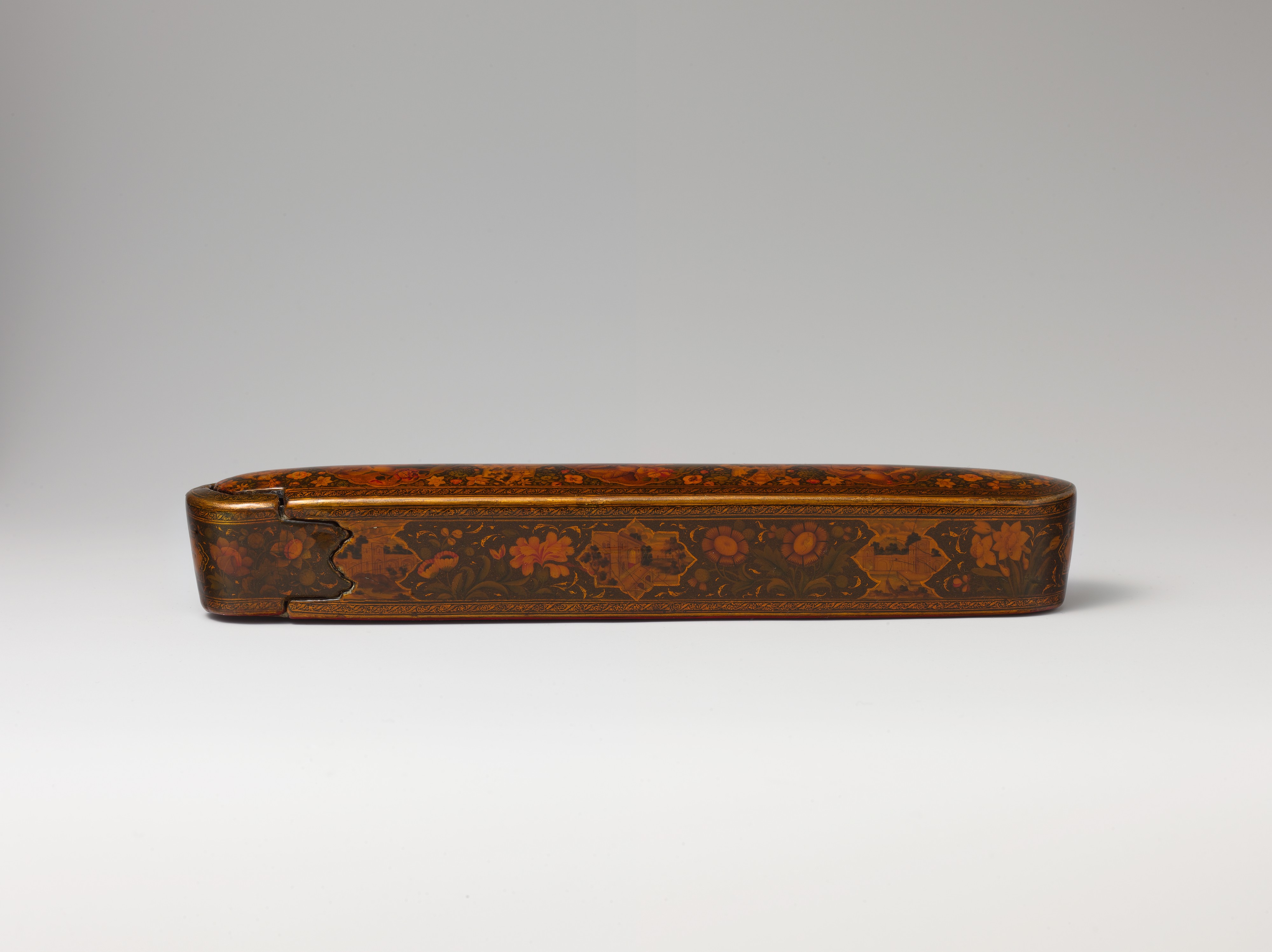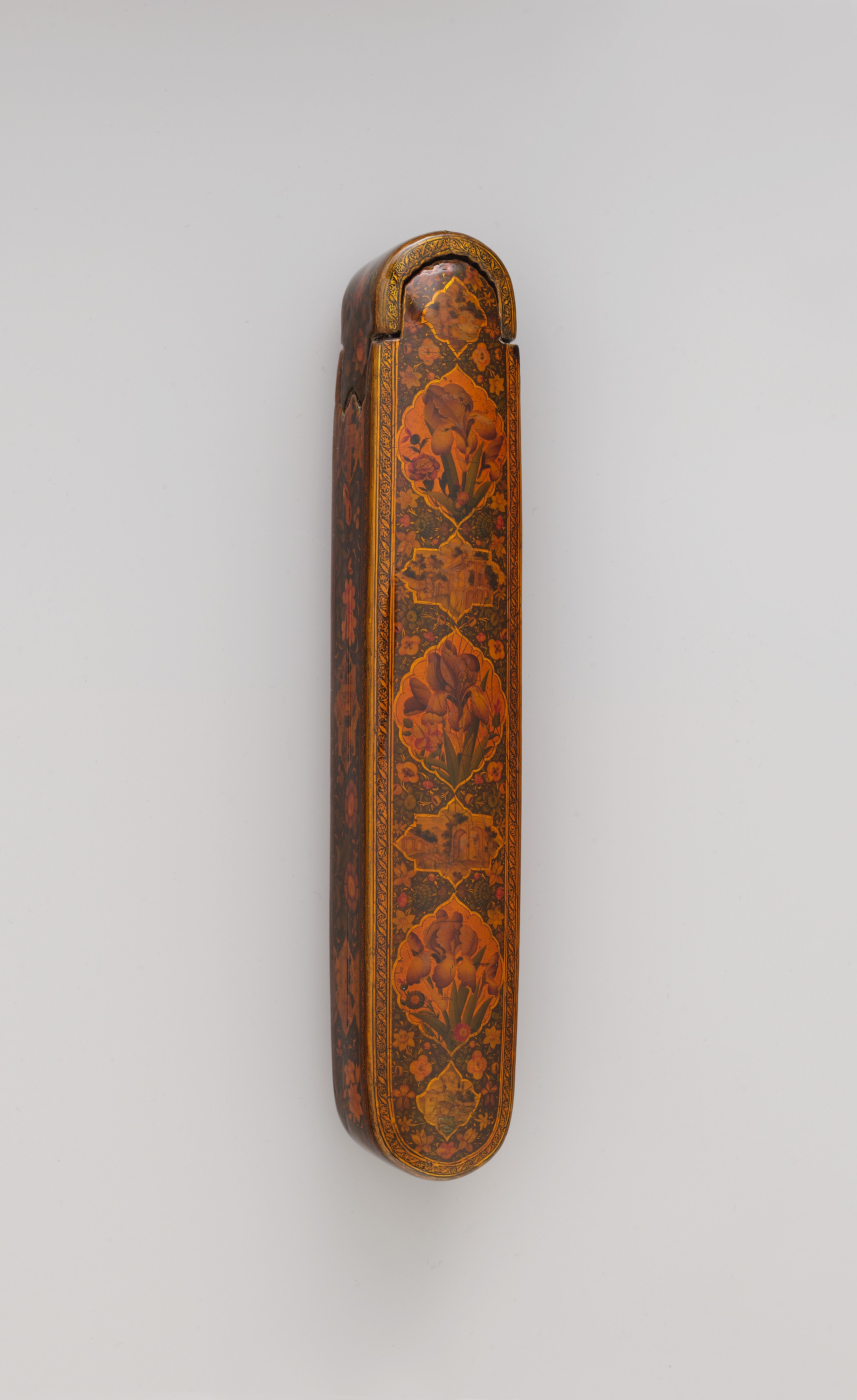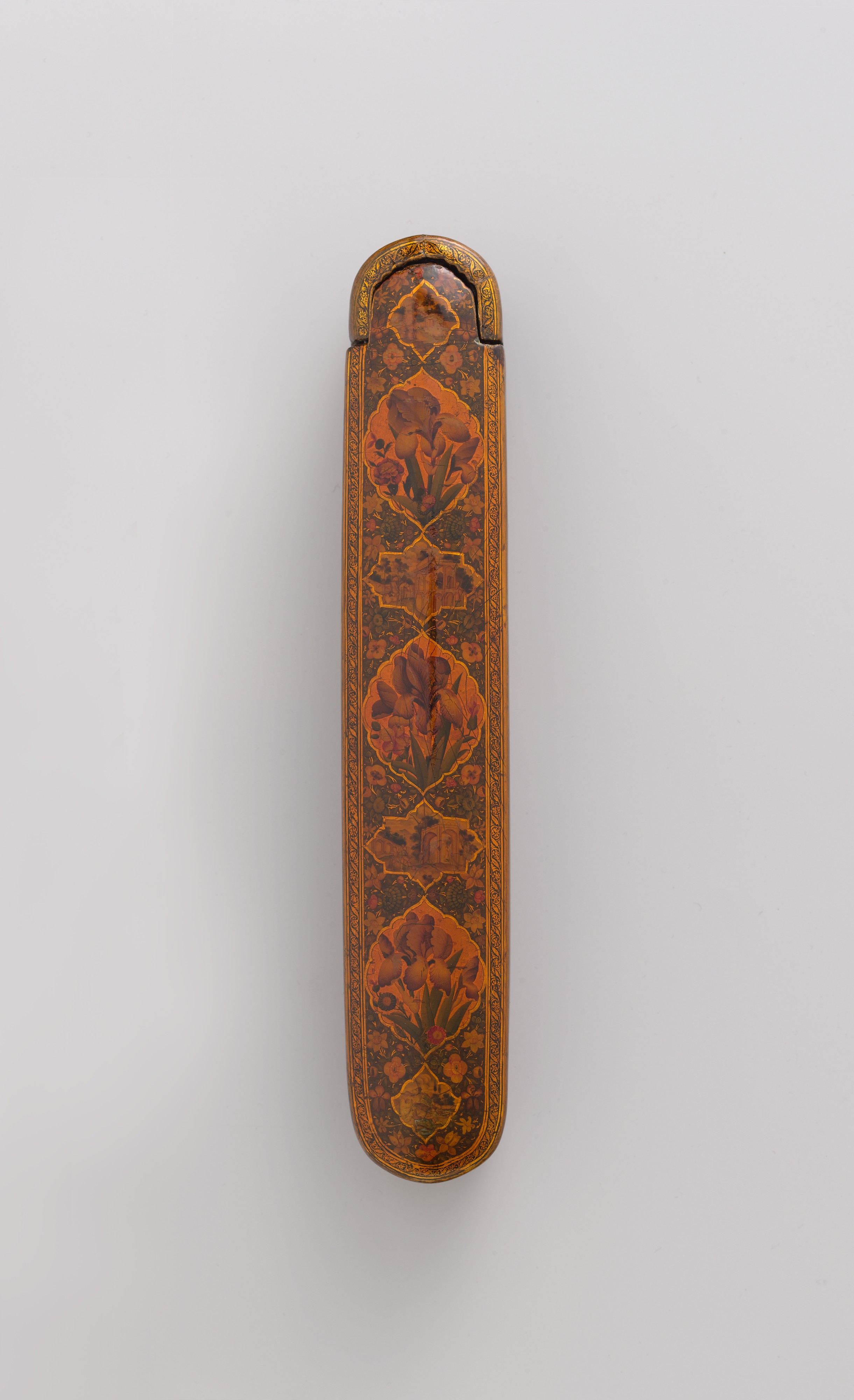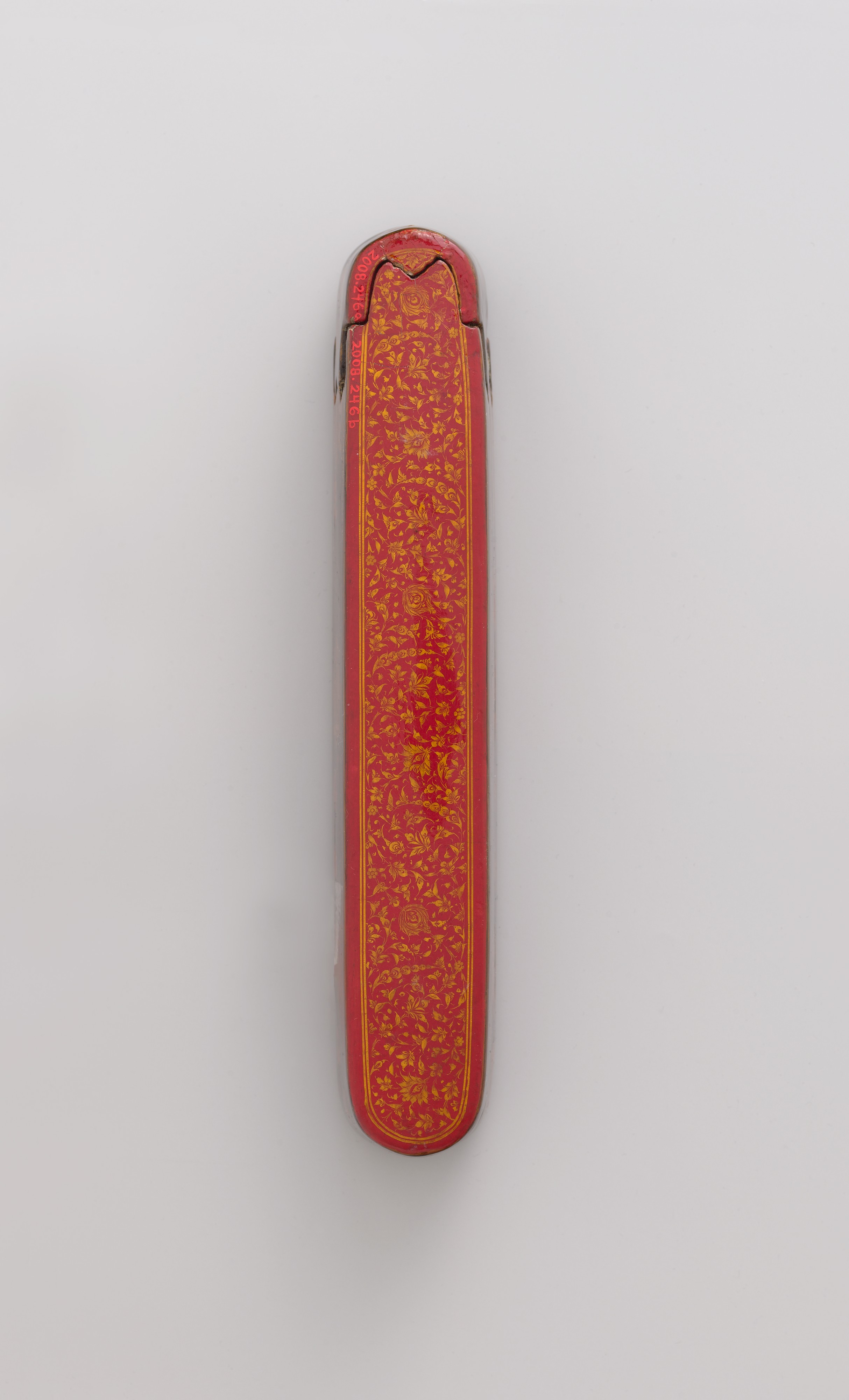Pen Box with Architectural Cartouches
'Ali Ashraf Iranian
Not on view
During the 18th and 19th centuries, Iran witnessed a proliferation in the production of lacquer objects. Regarded as desirable possessions and status symbols, painted lacquerwares were commissioned by royal and elite patrons, sold commercially and exported abroad in quantity. Lacquer painters took great pride in their individual styles, which they demonstrated by signing and dating their works. This one has been created by an artist named `Ali Ashraf and dated A.H. 1156/A.D. 1743–44.
A master of the gul-u-bulbul (bird-and-flower) motif seen on lacquer objects from this period in Iran, `Ali Ashraf worked in a tight-knit circle that included Hajji Muhammad, who specialized in objects with Europeanizing landscapes, as well as his brother Muhammad Zaman, under whom he trained. The signature on the box reads "After Muhammad, ‘Ali Ashraf is noblest", is a punning reference to his teacher. The irises he combined with architectural views on the box’s decoration are likely a nod to Muhammad Zaman’s well-known series of iris studies.
Due to rights restrictions, this image cannot be enlarged, viewed at full screen, or downloaded.
This artwork is meant to be viewed from right to left. Scroll left to view more.
